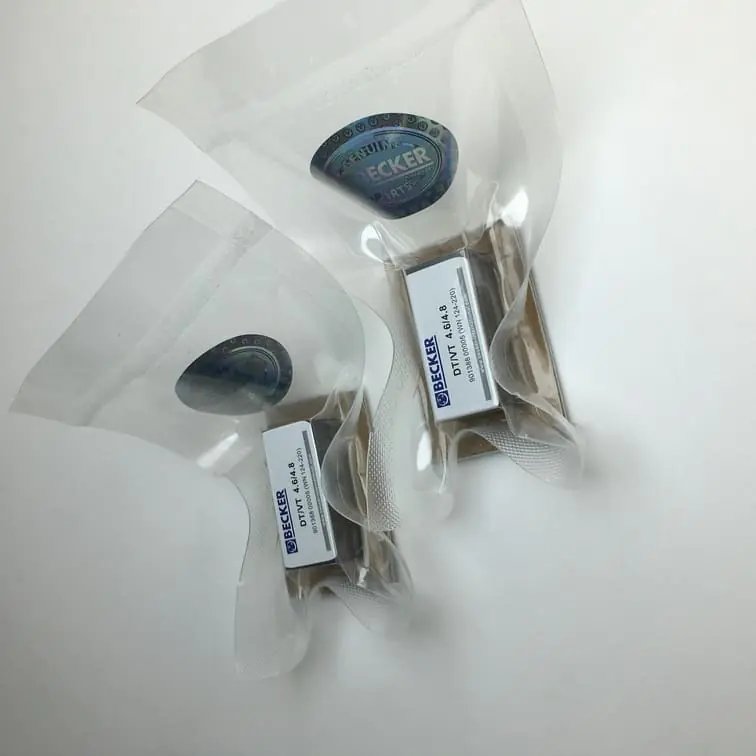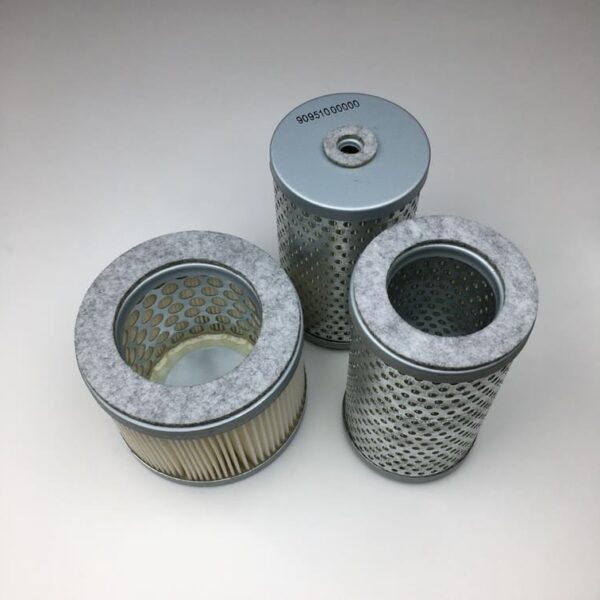A vacuum pump is an essential tool in various industries, including HVAC, manufacturing, and laboratory work. Like any equipment, it requires regular maintenance to ensure optimal performance. One critical maintenance task is flushing the oil out of the vacuum pump. Flushing helps keep the system clean, prolongs the life of the pump, and ensures it operates efficiently. In this guide, we will explore how to flush oil out of a vacuum pump properly, including why it’s necessary, the tools you need, and the step-by-step process.
Why Do You Need to Flush Oil Out of a Vacuum Pump?
The oil in a vacuum pump serves several essential purposes, including sealing, cooling, and lubrication. Over time, contaminants such as dirt, moisture, and other particles can build up in the oil. These contaminants can reduce the effectiveness of the oil, which in turn reduces the efficiency and lifespan of the vacuum pump.
Key Reasons for Flushing Vacuum Pump Oil
- Remove Contaminants: Flushing the oil helps to remove any contaminants that could damage the internal components of the pump.
- Improve Performance: Clean oil helps maintain the pump’s efficiency by ensuring a proper seal and smooth operation.
- Prolong Pump Lifespan: Regular oil changes and flushes help avoid costly repairs by extending the pump’s overall life.
Quote: “Regular maintenance, including oil flushing, is vital for ensuring a vacuum pump runs efficiently and reliably over its lifetime.” – HVAC Specialist
Tools You Will Need for Flushing Vacuum Pump Oil
Before starting the oil flushing process, it’s crucial to have the right tools. Here’s what you’ll need:
- Vacuum Pump Oil: Only use high-quality oil specifically designed for vacuum pumps.
- Oil Drain Pan: To collect the old oil during the draining process.
- Funnel: Helps in adding fresh oil without spilling.
- Wrench: To loosen and remove the drain plug.
- Cleaning Fluid: Special pump cleaning fluid, if required by the manufacturer.
- Gloves and Safety Goggles: Personal safety is essential when handling oil and cleaning fluids.
| Tool | Description |
|---|---|
| Vacuum Pump Oil | High-quality oil to replace the used oil. |
| Oil Drain Pan | Used to collect old oil safely. |
| Funnel | Helps prevent spills when adding new oil. |
| Wrench | Used to remove the oil drain plug. |
| Cleaning Fluid | Cleans any residue that may linger in the pump. |
| Gloves & Goggles | For personal safety during the oil change process. |
Step-by-Step Guide to Flushing Oil Out of a Vacuum Pump
Flushing oil out of a vacuum pump is relatively straightforward, but it’s important to follow each step carefully to avoid damaging the pump. Here is a step-by-step guide to help you through the process.
1. Preparation
Begin by preparing your workspace and gathering all the necessary tools. Place the vacuum pump on a flat, stable surface and ensure you have enough room to work comfortably.
- Turn Off the Pump: Make sure the pump is switched off and disconnected from any power source.
- Let the Pump Cool: Allow the vacuum pump to cool if it has been recently used. Hot oil can cause burns.
- Put On Safety Gear: Wear gloves and safety goggles to protect yourself from spills or splashes.
2. Drain the Old Oil
- Locate the Drain Plug: Identify the oil drain plug, usually located at the bottom of the vacuum pump.
- Place Oil Drain Pan: Position the drain pan underneath the plug to catch the used oil.
- Loosen the Drain Plug: Use a wrench to carefully loosen and remove the plug, allowing the oil to flow out. Make sure all the oil is drained completely.
- Check the Oil Color: Take note of the oil’s color and consistency. Dark, milky, or thick oil is a sign that it was time for a change.
3. Flush the Pump
Flushing is different from a standard oil change. It ensures any remaining contaminants are removed before adding fresh oil.
- Add Flushing Oil: Pour a small amount of clean vacuum pump oil or a special flushing fluid into the oil reservoir.
- Run the Pump: Turn the pump on for about 15-30 seconds to allow the flushing oil to circulate and pick up any remaining contaminants.
- Drain Again: Turn the pump off and drain the flushing oil just like you did with the original oil. This step may need to be repeated if the oil still appears dirty.
Pro Tip: Never run the pump without oil for more than a few seconds as it can cause severe damage to the internal parts.
4. Refill with Fresh Oil
After flushing, it’s time to refill the pump with fresh oil.
- Replace the Drain Plug: Once all the flushing oil has been drained, replace and tighten the drain plug securely.
- Add Fresh Oil: Use a funnel to add the new vacuum pump oil slowly. Fill it to the level recommended by the manufacturer, typically marked on the oil sight glass.
- Check for Leaks: After filling, check around the drain plug and other areas for any signs of leakage.
| Step | Action Description |
|---|---|
| Preparation | Turn off the pump, wear safety gear, gather tools. |
| Drain Oil | Remove drain plug, drain oil into a pan, observe oil quality. |
| Flush Pump | Add flushing oil, run briefly, drain, repeat if needed. |
| Refill with Oil | Tighten plug, use funnel to add fresh oil, check for leaks. |
How Often Should You Flush Oil Out of a Vacuum Pump?
The frequency of oil changes and flushes depends on the type of vacuum pump, its usage, and the manufacturer’s recommendations. Here are some general guidelines:
1. Routine Maintenance
- Heavy Use: If your vacuum pump is in constant use, such as in an HVAC setting, it may require oil changes and flushing every 200-500 hours of operation.
- Moderate Use: For less intensive use, a vacuum pump should have its oil changed every three to six months.
2. Signs It’s Time to Flush
- Oil is Milky or Dark: This indicates moisture or contaminants, which can reduce the oil’s ability to lubricate and seal.
- Reduced Pump Performance: If your pump is not achieving the proper vacuum levels, it may be due to contaminated oil.
Note: Always refer to your vacuum pump’s manual for the manufacturer’s specific maintenance recommendations.
Common Mistakes When Flushing Vacuum Pump Oil
While flushing vacuum pump oil is a straightforward process, some common mistakes can lead to damage or inefficiency.
1. Using the Wrong Oil
Always use oil specifically designed for vacuum pumps. Using motor oil or another type of lubricant can reduce the pump’s efficiency and lead to internal damage.
2. Not Running the Pump During Flush
Some users skip running the pump briefly after adding flushing oil. Running the pump helps ensure all contaminants are picked up and removed.
3. Overfilling or Underfilling
Adding too much or too little oil can be harmful. Overfilling can cause excess pressure and leaks, while underfilling can lead to poor lubrication and potential damage.
Table: Common Mistakes During Oil Flushing
| Mistake | Consequence |
|---|---|
| Using Incorrect Oil | Reduces efficiency, potential internal damage. |
| Skipping Pump Running | Leaves contaminants inside the system. |
| Incorrect Oil Level | Causes leaks or insufficient lubrication. |
Advantages of Regularly Flushing Vacuum Pump Oil
Regular maintenance, including oil flushing, offers several benefits for both the longevity and performance of your vacuum pump.
1. Optimal Performance
Flushing removes contaminants that can hinder performance, ensuring your pump runs at its highest efficiency.
- Better Vacuum Levels: Clean oil allows the pump to reach its desired vacuum levels without excess strain.
- Smooth Operation: Proper lubrication helps maintain smooth and quiet operation.
2. Reduced Maintenance Costs
By keeping your vacuum pump properly maintained, you can avoid more significant issues down the line. This means fewer breakdowns and less costly repairs.
- Extended Pump Life: Regular maintenance helps avoid early component wear and tear.
- Fewer Replacements: Keeping your pump clean and well-lubricated means less frequent part replacements.
Internal Links for Related Vacuum Pump Components
For more vacuum pump components or accessories to assist in your maintenance tasks, explore the following products available at vacuumpumppart.com:
Frequently Asked Questions
1. How often should I change the oil in my vacuum pump?
Typically, you should change the oil every 200-500 hours of operation, depending on how often you use your vacuum pump and the type of work it does.
2. Can I use motor oil to replace vacuum pump oil?
No, you should only use oil specifically designed for vacuum pumps. Motor oil does not have the properties required for effective vacuum pump operation.
3. What should I do if the oil turns milky?
If your vacuum pump oil turns milky, it means moisture has contaminated it. You need to flush the pump and replace the oil as soon as possible.
4. How do I know if my vacuum pump needs flushing?
Signs include dark or milky oil, reduced vacuum efficiency, or the pump making unusual noises. These indicate that contaminants are affecting the oil quality.
5. Can I overfill the vacuum pump with oil?
Yes, overfilling a vacuum pump can lead to pressure buildup and potential leakage. Always fill according to the manufacturer’s specified level.
Conclusion
Flushing oil out of a vacuum pump is a critical maintenance task that ensures your pump operates at peak efficiency. By following the steps outlined in this guide, including draining the old oil, flushing, and refilling with fresh oil, you can maintain your pump’s performance and extend its life. Remember, regular oil changes and maintenance aren’t just best practices—they’re essential for any vacuum system’s longevity and efficiency.
For all your vacuum pump parts and accessories, including oil, vanes, and filters, visit vacuumpumppart.com. Proper maintenance can make all the difference in keeping your vacuum pump running smoothly for years to come.


